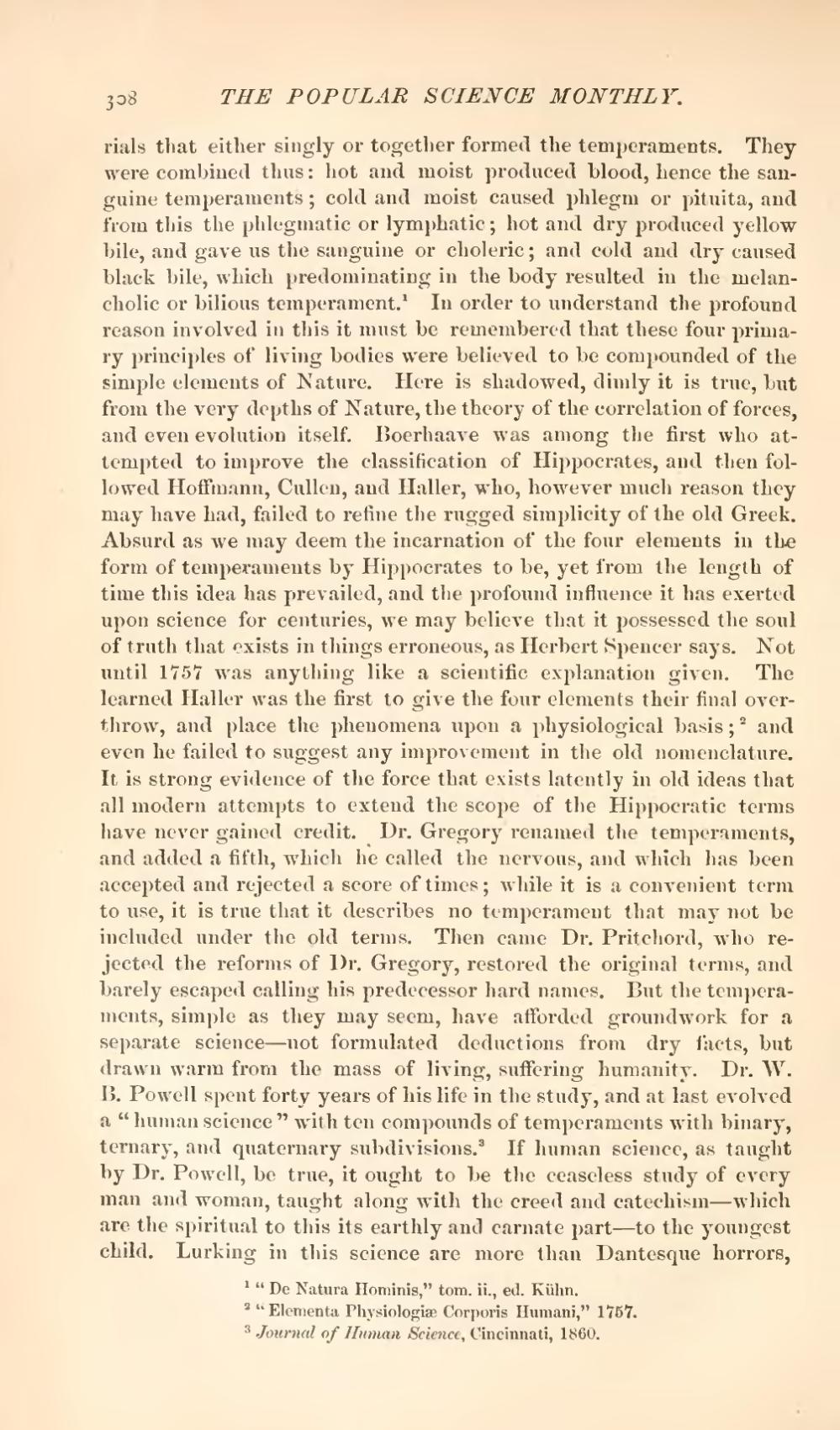rials that either singly or together formed the temperaments. They were combined thus: hot and moist produced blood, hence the sanguine temperaments; cold and moist caused phlegm or pituita, and from this the phlegmatic or lymphatic; hot and dry produced yellow bile, and gave us the sanguine or choleric; and cold and dry caused black bile, which predominating in the body resulted in the melancholic or bilious temperament.[1] In order to understand the profound reason involved in this it must be remembered that these four primary principles of living bodies were believed to be compounded of the simple elements of Nature. Here is shadowed, dimly it is true, but from the very depths of Nature, the theory of the correlation of forces, and even evolution itself. Boerhaave was among the first who attempted to improve the classification of Hippocrates, and then followed Hoffmann, Cullen, and Haller, who, however much reason they may have had, failed to refine the rugged simplicity of the old Greek. Absurd as we may deem the incarnation of the four elements in the form of temperaments by Hippocrates to be, yet from the length of time this idea has prevailed, and the profound influence it has exerted upon science for centuries, we may believe that it possessed the soul of truth that exists in things erroneous, as Herbert Spencer says. Not until 1757 was anything like a scientific explanation given. The learned Haller was the first to give the four elements their final overthrow, and place the phenomena upon a physiological basis;[2] and even he failed to suggest any improvement in the old nomenclature. It is strong evidence of the force that exists latently in old ideas that all modern attempts to extend the scope of the Hippocratic terms have never gained credit. Dr. Gregory renamed the temperaments, and added a fifth, which he called the nervous, and which has been accepted and rejected a score of times; while it is a convenient term to use, it is true that it describes no temperament that may not be included under the old terms. Then came Dr. Pritchord, who rejected the reforms of Dr. Gregory, restored the original terms, and barely escaped calling his predecessor hard names. But the temperaments, simple as they may seem, have afforded groundwork for a separate science—not formulated deductions from dry facts, but drawn warm from the mass of living, suffering humanity. Dr. W. B. Powell spent forty years of his life in the study, and at last evolved a "human science" with ten compounds of temperaments with binary, ternary, and quaternary subdivisions.[3] If human science, as taught by Dr. Powell, be true, it ought to be the ceaseless study of every man and woman, taught along with the creed and catechism—which are the spiritual to this its earthly and carnate part—to the youngest child. Lurking in this science are more than Dantesque horrors,
